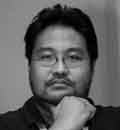TOMORROW is Valentine’s Day, and both José Rizal and Andres Bonifacio said that the greatest love of all is the love of one’s native land. And its best expression occurs when Filipinos fight for it based on the needs of the time, and during the difficult time of the nascent Filipino nation, it was waging the revolution and starting the difficult job of governing ourselves after being used to being under a foreign power for 333 years.
We always refer to the Philippine Revolution and the Philippine-American War as two of the most important events that hastened the birth of the nation. Yet, much of the discussion tends to focus on the events surrounding the national leaders, for example the Andres Bonifacio and eventually the subsequent Emilio Aguinaldo governments. Yet, if it was about the birth of the nation, why tend to focus on events in Luzon? Also, when we look at narratives of the war in the provinces, they were written by either the Spaniards or Americans. To sound off their region’s participation in the national revolution, local historians and writers take great pains to travel to Manila, or even abroad, to reconstruct their history, sometimes to no avail because unfortunately, history is skewed toward those who were able to write documents, and stories remain just stories until documentation is found. That is why folders containing historical documents about the Philippine Revolution from a private collector surfacing at the Leon Gallery recently is every local historian’s dream.
Continue reading with one of these options:
Ad-free access
P 80 per month
(billed annually at P 960)
- Unlimited ad-free access to website articles
- Limited offer: Subscribe today and get digital edition access for free (accessible with up to 3 devices)


